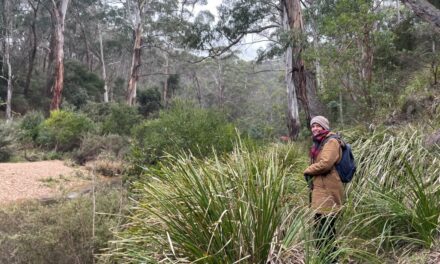Peter Duncan
Locals concerned about homelessness have set up an organisation ‘Safe Place Homes Inc’ to push for action in our communities. Safe Place strives to explain who is eligible for affordable housing, how new affordable housing comes into being and what the need is in the Shire. This article is the third of a series sponsored by Safe Place. Our aim here is give some national and state background to the issue.
Today the dream of home ownership is fading, particularly for young people and those on low incomes – including in Hepburn Shire. Housing has become so much more expensive. Yet, over the past two generations governments have failed to invest in public housing or to provide consistent support to not-for-profit community housing.
As a result, the private rental market is the fastest growing sector now and this is also becoming less affordable as it reflects the increase in house prices. In Australia, landlords do not rent for the long term (as in some other countries such as Germany and Scandinavia) but rather for short term capital gain on the value of the property.
Negative gearing and discounted capital gains tax encourage us to buy investment properties in the hope of capital gains. About 8% of Australians now own at least one investment property.
Since the early nineties, median house prices have increased by some 400%. About half of all new housing lending between 2003 and 2017 went to property investors rather than owner-occupiers. In 2000 it was calculated that 60% of all private wealth in Australia was held in housing, a rate 50% higher than in Britain, double the rate in France and almost triple the rate in the United States.
As Peter Mares, in his book ‘No Place Like Home’, notes: “It is a political choice, through subsidies and tax concessions, to allow housing to become a speculative sport instead of a human right.”
Those at the needy end of our society: low-paid workers, the unemployed, single women with no money, women escaping domestic violence, etc. have more and more difficulty finding housing and not infrequently finish up homeless. This is a scandal in a country as wealthy as Australia.
The Australian Housing and Urban Research Institute forecast that the number of households receiving rent assistance would rise by 61 percent between 2011 and 2031 and the amount spent on rent assistance would rise from $2.8 to $4.5 billion. This follows a large increase in previous years. In 2014, 2.5 million Australians aged over fifteen had been homeless at some time in their lives.
Housing groups have proposed Australian Government investment of $7bn as part of the infrastructure stimulus measures in response to COVID. This would enable the delivery of at least 30,000 additional social housing units and renovation to high environmental standards of many thousands more. A similar stimulus package was put in place for the GFC. The federal government has rejected this on the basis that social housing is a state responsibility
In Victoria there were more than 82, 000 people waiting for social housing in March 2018 . Social housing accounts for only about 3.5% of Victoria’s housing stock. Around 30,000 houses would need to be built over the next twenty years just to maintain this percentage. Double this amount would be needed if lower income households and those currently homeless or facing housing stress in the private rental market, are to have affordable housing.
There are about ten substantial housing associations in Victoria relying on a mix of government and private funding working to alleviate this situation. The federal government recently set up a new Commonwealth entity, the National Housing Finance and Investment Corporation, to improve housing affordability. NHFIC is working with the housing associations. High housing and land values are an obstacle and progress is slow. A major effort needs to be made to identify and free up government owned land for this purpose.
This is not just another collection of economic statistics. These are people living in straitened circumstances in one of the richest countries in the world. Other countries have shown how much better this can be done. We believe government at all three levels could do more. But we also believe that each of us should be asking ourselves what contribution we can make.
More about this in future articles.
NOTE: This article draws extensively on Peter Mares’ recent book: ‘No Place Like Home’ which is recommended reading for anyone interested in the problem.
Peter Duncan in a Daylesford resident.




